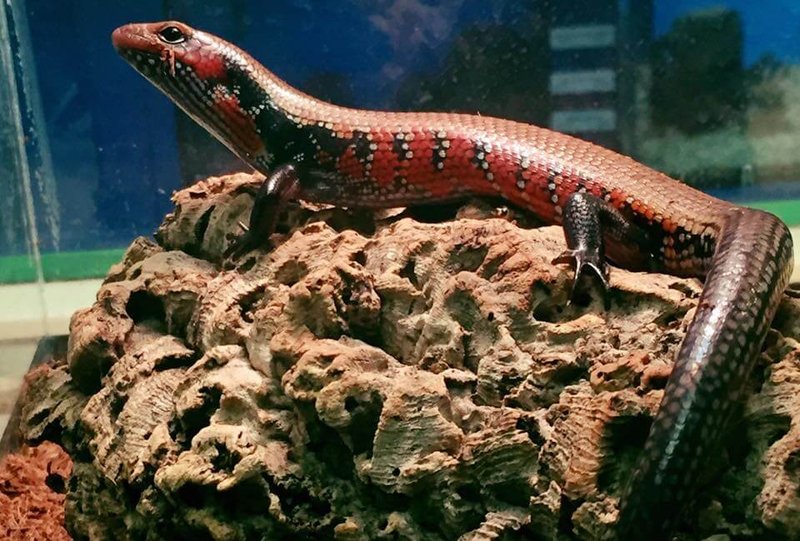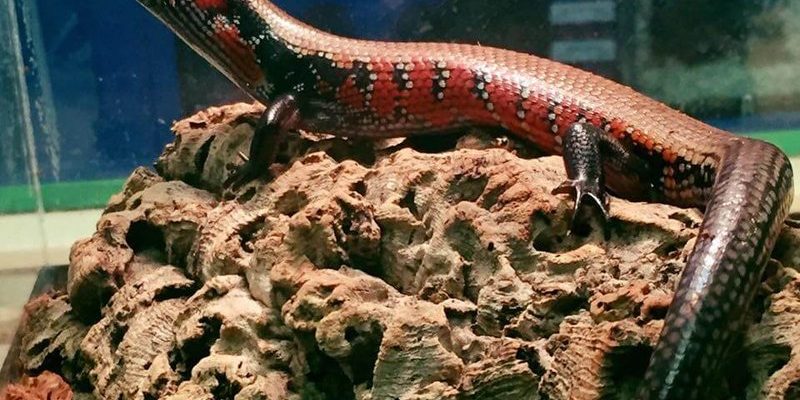
Imagine a lively performance where each skink plays its part in a carefully choreographed dance. The breeding rituals of fire skinks are not just instinctual; they are a blend of behavior, environmental cues, and a touch of personal flair. So, grab a cup of coffee and let’s dive into the intriguing world of the fire skink’s reproductive behavior.
Understanding the Fire Skink
To truly appreciate the breeding habits of the fire skink, it’s essential to know what makes this species unique. Fire skinks, scientifically known as *Lamprolepis frenata*, are strikingly colorful reptiles. They sport a vivid orange or red-orange body with dark stripes, resembling a living flame. This bright coloration isn’t just for show; it plays a role in attracting mates.
These reptiles typically grow to around 12 to 15 inches in length and are quite agile. You might spot them basking on branches or hiding among the foliage. Their natural habitats are usually tropical and humid, which are key elements in their reproductive success.
As social creatures, fire skinks exhibit interesting behaviors when it comes time to mate. They establish a hierarchy through displays of aggression and courtship rituals, which we’ll explore more in-depth later on.
Breeding Season and Timing
So, when does the breeding magic happen for fire skinks? Generally, the breeding season aligns with the wet season in their native West African habitats. This is around the spring or early summer. The increased humidity and temperature create an ideal environment for reproductive activities.
During this time, male fire skinks become more active and start displaying courtship behaviors. They may chase each other and engage in displays of dominance, which helps them establish territory and attract females. It’s during this dance of dominance that you can see the fiery colors of their bodies truly shine, making them even more appealing to potential mates.
Here’s the fun part: once a male successfully courts a female, they engage in a brief but intense mating session. The actual act of mating only takes a few minutes, but it’s packed with passion and purpose.
Courtship Rituals and Behaviors
Courtship among fire skinks is like a carefully choreographed dance. Males often initiate the courtship process by engaging in head-bobbing displays. This can seem a little odd at first, but it’s quite effective! The bobbing communicates to females that the male is strong and ready to mate.
After the initial display, males will often follow females around, trying to win their affection. They might also nudge or gently flick their tongues at the female, which can be a form of flirtation. If the female is receptive, she may respond by staying close and allowing the male to approach.
Interestingly, if a female does not find a male attractive or is not ready to mate, she might display defensive behavior, such as hiding or darting away. This behavior is crucial for preventing unwanted mating and ensures that only the strongest males pass on their genes.
Gestation and Egg Laying
After a successful mating, the female fire skink enters the gestation period, which typically lasts about two to three months. During this time, she prepares herself for the significant task of laying eggs. It’s quite a process!
Once she’s ready, the female seeks out a suitable nesting site. This spot often has soft, moist substrate, which is critical for the developing eggs. Fire skinks usually lay between 5 to 10 eggs, which she deposits in a small, burrow-like nest.
After laying her eggs, the female may leave the site to return to her normal activities. Unlike some other reptiles, fire skinks do not exhibit parental care once the eggs are laid. This means it’s up to the eggs to develop and hatch on their own.
Incubation and Hatching
Now that the eggs are laid, you might be wondering what comes next. The incubation period for fire skink eggs typically ranges from 60 to 90 days. During this time, the eggs rely on warm, humid conditions to thrive. In the wild, natural temperatures and humidity levels play a significant role in ensuring the eggs develop properly.
If conditions are right, you’ll soon see little fire skinks emerging from their eggs. They hatch fully formed and ready to take on the world. They are already mini versions of their parents, with similar coloring and patterns, but they may be a bit smaller and more vulnerable.
Once hatched, the tiny skinks will venture out to find food and shelter. They must quickly adapt to their environment to survive, as they are at risk from predators. This early independence is crucial for their survival in the wild.
Behavioral Adaptations for Reproduction
Fire skinks have developed certain behavioral adaptations that enhance their chances of successful reproduction. One of their key adaptations is their ability to thrive in humid environments, as moisture is vital for egg-laying.
They are also known to be secretive in nature, which can help protect their eggs from predators. By nesting in hidden spots, fire skinks reduce the risk of their eggs being discovered and eaten. This cautious behavior ensures that even if they do not care for their offspring, their young have a better chance of survival.
Males also exhibit a keen sense of territory. By establishing and defending their territory, they not only deter rivals but also create a safer environment for potential mates. This behavior highlights their instinct to ensure that they pass on their genes successfully.
The breeding and reproductive behavior of fire skinks is a captivating journey filled with unique rituals and exciting adaptations. From the vibrant courtship displays to the careful selection of nesting sites, every step of their reproductive process is designed to maximize the chances of survival for their young.
For anyone interested in reptiles or the complexities of nature, the fire skink offers a fascinating glimpse into the world of mating and parenting in the wild. These lizards remind us that even in the animal kingdom, love and survival often go hand in hand. So, whether you’re a budding herpetologist or just a curious observer, the life of fire skinks is truly a remarkable story worth exploring.

